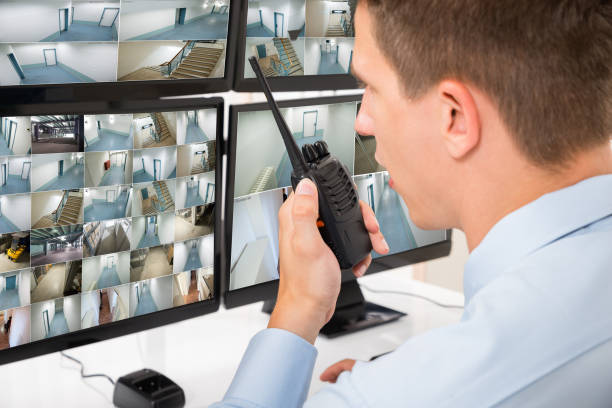Security cameras have become an essential part of modern-day security systems. With the rise of crime rates and heightened safety concerns, more and more people are opting to install security cameras in their homes and businesses. However, setting up a security camera system can be a daunting task, especially for those who have no prior experience with such installations.
Fortunately, with the right knowledge and tools, anyone can master the art of security camera installation. In this article, we will take you through the steps involved in setting up a surveillance system and provide tips for ensuring effective monitoring.
Before purchasing any equipment or installing your cameras, it is crucial to plan out your setup carefully. Start by determining which areas of your property need surveillance coverage. Consider factors such as high-traffic areas or potential entry points for intruders.
Next, decide on the type of cameras you need – fixed or PTZ (pan-tilt-zoom). Fixed cameras are stationary and capture footage from one location while PTZ cameras can rotate, tilt, and zoom to cover a larger area. It’s important to choose high-quality cameras that provide clear images and sufficient coverage for your specific needs.
Once you have decided on the areas where you want to install your cameras, it’s time to get down to business! Make sure you have all necessary tools before starting – including screws, power cables, drill machine etc.
Begin by mounting your camera brackets at strategic locations according to your plan. Next comes wiring – this is undoubtedly one of the trickiest parts of fire alarm installation near me as it requires running cables through walls or ceilings. For wireless systems however connectivity is much easier – but make sure that they’re properly secured so they can’t be tampered with easily.
When positioning fixed cameras ensure that they cover as much ground as possible without any obstructions in their line-of-sight; while PTZs must be positioned in areas with a 360-degree view. Mounting cameras at a height of 8 to 10 feet ensures maximum coverage while keeping them out of reach from potential tampering.
Once your cameras are securely mounted, the next step is to connect them to your system and start monitoring! First, connect the power cables and network cables for wired systems; or configure your wireless system using wireless protocols such as Wi-Fi or Bluetooth.
Next, configure your cameras through their respective software or mobile apps. This includes setting up motion detection, adjusting camera angles, and connecting to remote viewing options. You can also set up alerts for specific events such as motion detection or tampering attempts.
With your security camera setup complete, the final step is monitoring. Make sure all your cameras have clear views without any obstructions that could affect their functionality. Additionally, regularly check for updates on software or hardware improvements that could enhance performance.
Regularly review footage from your cameras to ensure they’re functioning correctly and any issues are resolved promptly. Consider integrating remote monitoring capabilities so you can access live footage anywhere at any time using a smartphone app or web browser.
In conclusion, setting up a surveillance system may seem like an intimidating task at first glance; however with proper planning and execution it can be mastered by anyone. By following these steps – planning setup areas carefully, proper installation procedures connect & configuration setup – you’ll be well on your way towards ensuring optimal security coverage for both residential & commercial projects.
Mammoth Security Inc. New Britain
1 Hartford Square #25, New Britain, CT, 06052
(860) 748-4292




